The 37 Cluster, also known by its New General Catalogue designation NGC 2169, is a small open cluster located in the constellation Orion. With an apparent magnitude of 5.9, it is easily observed in binoculars and small telescopes. The cluster lies approximately 3,600 light-years away.
The cluster’s popular nickname, the 37 Cluster, comes from its appearance, which resembles the number 37 or, if seen upside down, the letters “LE.” NGC 2169 is sometimes also called the LE Cluster, the Shopping Cart Cluster, or the Little Pleiades. Some observers report a resemblance to the letters XY. The striking resemblance to the number 37 makes the cluster a popular target for amateur astronomers.
NGC 2169 is catalogued as Collinder 83 in Swedish astronomer Per Collinder’s 1931 catalogue of open clusters. It contains about 30 stars, the most luminous of which are hot, blue B-type stars. The estimated age of the stars in the cluster is about 8 million years.
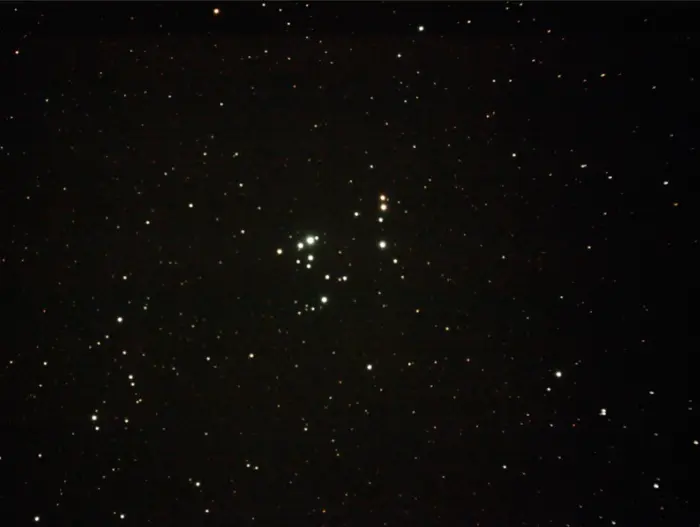
The 37 Cluster (NGC 2169), image credit: Wikimedia Commons/ScottRak (CC BY-SA 3.0)
Cluster members are very young stars that have not yet had much time to leave their parent cluster. The B-type stars will probably not live long enough to travel too far. These stars are very massive, and they burn through their supply of nuclear fuel faster than lower-mass stars. Some of the less massive G-, K- and M- type members will gradually drift away and the cluster will dissipate over time.
NGC 2169 hosts several variable stars. The Beta Cephei variables V916 Orionis and V917 Orionis, and the Alpha2 Canum Venaticorum variable V1356 Orionis are probable members.
V916 Orionis and V917 Orionis are hot blue main sequence stars of the spectral type B2.5 V. Like all Beta Cephei variables, these stars exhibit small rapid fluctuations in brightness due to pulsations of their surfaces. Stars in this class typically have masses between 7 and 20 solar masses.
V1356 is a slightly cooler main sequence star of the spectral type A0V. It is an Alpha2 Canum Venaticorum variable, a chemically peculiar star with strong magnetic fields and an uneven distribution of metals. These stars vary in brightness because different parts of their surfaces vary in brightness, and the periods of the brightness variations correspond to the periods of the stars’ rotation.
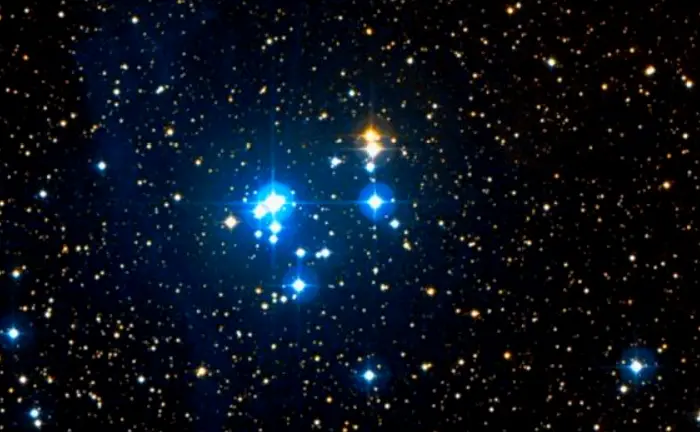
The 37 Cluster, image: Wikisky
The 37 Cluster may have been spotted by the Italian astronomer Giovanni Batista Hodierna before 1654. The credit for its discovery is usually attributed to the German-born British astronomer William Herschel, who observed the cluster on October 15, 1784.
Location
NGC 2169 lies in the northern portion of Orion, north of Betelgeuse and near the border with the constellation Gemini. It appears near the stars Xi and Nu Orionis, which mark the bend of the Hunter’s outstretched arm. The cluster lies below the two stars and forms a right-sided triangle with them.
Xi and Nu Orionis are not as bright as some of their Orion neighbours. Xi Orionis has an apparent magnitude of 4.47 and Nu Orionis shines at magnitude 4.42. Both are hot blue B-type stars with masses 6.7 times that of the Sun, more than a thousand times more luminous than our star. However, they may not be easy to make out from light-polluted areas.
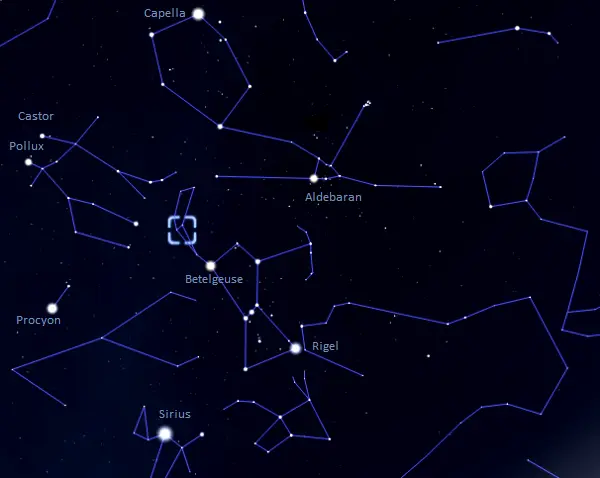
The location of NGC 2169, image: Stellarium
NGC 2169 can also be found using the brighter Meissa, the star that marks Orion’s head, and Alhena in Gemini. The cluster appears less than halfway from Alhena to Meissa, near the centre of the Winter Hexagon (Winter Circle), a large winter asterism formed by Sirius in Canis Major, Procyon in Canis Minor, Pollux in Gemini, Capella in Auriga, Aldebaran in Taurus, and Rigel in Orion.
Alternatively, the cluster can be found just north of the imaginary line connecting Procyon and Aldebaran. It appears just south of the Lower’s Nebula (Sh2-261), an H II region ionized by the hot blue O-type star HD 41997.
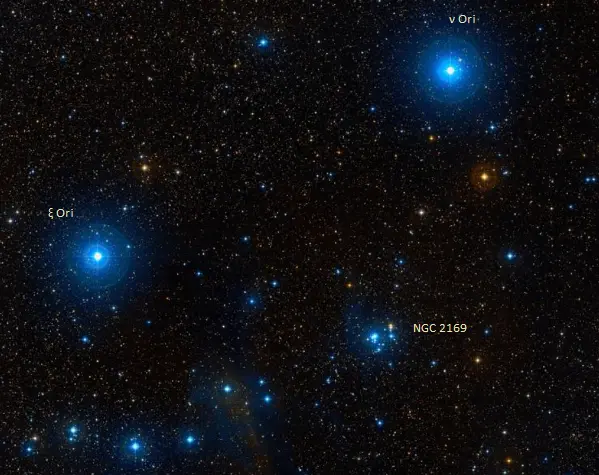
The location of NGC 2169 near Xi and Nu Orionis, image: Wikisky
The 37 Cluster lies in the same region of the sky as the fainter open cluster NGC 2194 (Collinder 87). NGC 2194 has a visual magnitude of 8.5 and stretches 9 arcminutes across. It lies about 12,320 light-years away.
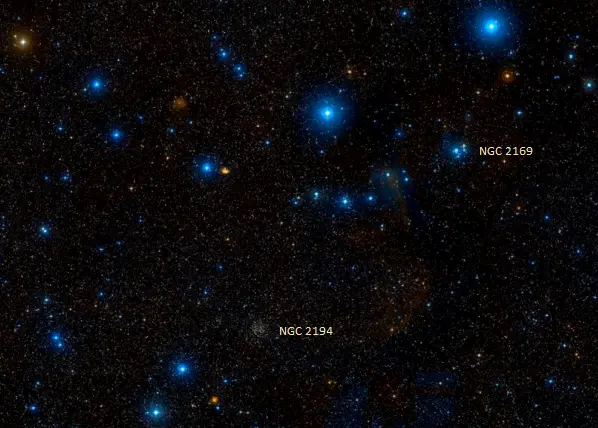
NGC 2194 and NGC 2169, image: Wikisky
NGC 2169 can be observed in small telescopes. Larger apertures reveal some of the fainter members.
The best time of the year to observe the 37 Cluster and other deep sky objects in Orion is during the month of January. The celestial Hunter dominates the evening sky from November to February.
NGC 2169
| Constellation | Orion |
| Right ascension | 06h 08m 30.0s |
| Declination | +13° 57′ 04” |
| Apparent magnitude | 5.9 |
| Apparent size | 7 arcminutes |
| Names and designations | NGC 2169, Collinder 83, 37 Cluster, LE Cluster, Shopping Cart Cluster, XY Cluster |